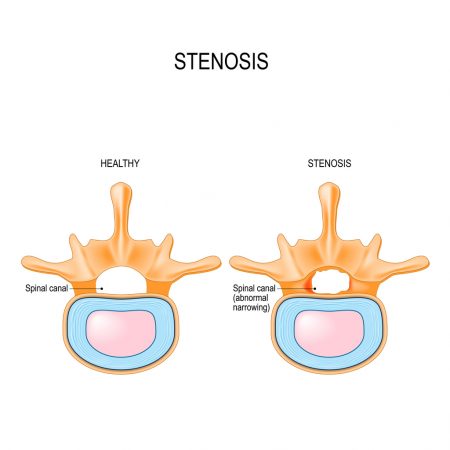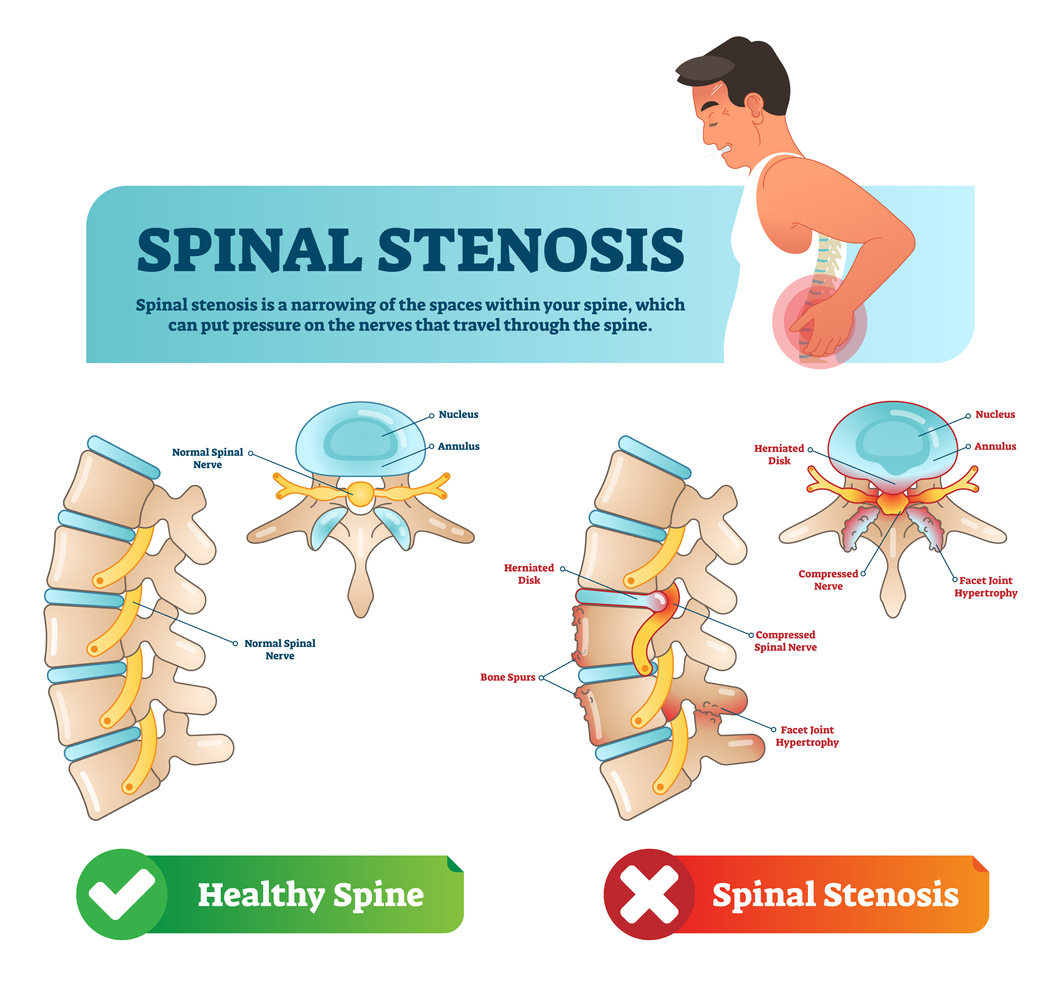LUMBAR LAMINECTOMY
People who suffer from spinal stenosis could benefit from a lumbar laminectomy, which is a treatment that decompresses the spinal cord.

What is a Laminectomy?
- Removal of bone, the lamina, which is the posterior ring of the spinal canal
- This allows for decompression of the spinal canal and nerve roots being compressed
- Using a high speed drill, the lamina is drilled away to expose the underlying ligamentum flavum
- The ligamentum flavum is also removed to expose the underlying spinal canal and the existing nerve roots. The spinal canal contains the thecal sac, which houses the cauda equina (collection of nerves) that eventually turn into the nerves that go down your legs providing movement and sensation in your legs.
- By decompressing the thecal sac and the nerve roots, this can alleviate symptoms in a patient’s legs
Why Do You Need a Laminectomy?
This surgical procedure is performed to treat several conditions, including:
- Spinal stenosis
- Herniated disc
- Pinched nerve
- Bone spur
- Osteoarthritis of the spine
- Enlarged facet joints

Learn More About Lumbar Laminectomy
Symptoms That Might Require a Laminectomy?
- Neurogenic Claudication – Symptoms usually include numbness or heaviness in your legs when you walk or stand for too long. You can also feel like you have no strength in your legs when you walk. Most patients can only walk several hundred feet before having to stop and sit because their legs feel so weak, numb, or tired. After sitting for a short amount of time, the symptoms improve. Symptoms may also improve with leaning over a shopping cart or chair.
- Leg Pain – Shooting pain down your leg.
Recovery and Limitations
- The patient is usually home the same day or in the hospital for 1 night
- The patient has to avoid heavy lifting, bending, and twisting for 6 weeks so the wound heals
- Usually patient is able to return to work or activities with no restrictions around 6 weeks after surgery
Schedule an appointment
- Contact Us
Ready to learn more? Contact us today to get started.
Make an Appointment
New & Existing Patients: Request An Appointment
New and existing patients may request an appointment by filling out the form below. Someone from our team will be contacting you to schedule an appointment time.
